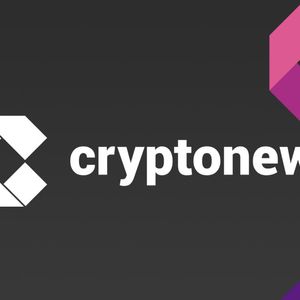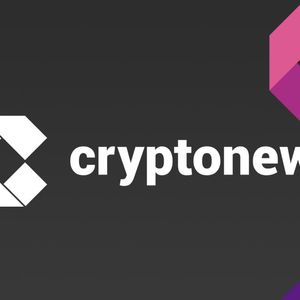Tether’s USDT now accounts for almost half of the total moved value in blockchain networks. This past month, 43% of the total on-chain transfer volume was USDT, moving a titanic $156.2 billion worth of cryptocurrency. With the continued maturation of the crypto market, stablecoins are increasingly a foundational building block — and now USDT is carrying that with a growing force. USDT tops $156B in 30d transfer volume $USDT dominates with 43% of all value transferred across blockchains, totaling $156.2B in the past 30 days. Meanwhile, $SOL has pulled ahead of both $ETH and $BNB in net transfer volume. Bitcoin tokens like $BTCB and $cbBTC are also seeing… pic.twitter.com/OcpE4M2jCY — CryptoRank.io (@CryptoRank_io) April 29, 2025 A recent flood of new issuance has highlighted Tether’s market presence. In the span of only two days, Tether created $3 billion worth of USDT, with a minting of $2 billion occurring on Ethereum alone. These types of Operation mints are usually interpreted as necessary preparations for meeting the demand for liquidity, which seems to be increasing across both centralized exchanges and on-chain apps. Tether minted 2B $USDT on Ethereum ~7 hours ago. Over the past 2 days, #Tether has minted 3B $USDT on both #Ethereum and #Tron . Follow @spotonchain for more updates at https://t.co/J11gMhhaQg https://t.co/R77KgaYt7D pic.twitter.com/KLX3bmTVPB — Spot On Chain (@spotonchain) April 30, 2025 USDT is the most traded and most integrated stablecoin, powering everything from DeFi and remittances to institutional settlements. Activity is increasing and volatility is returning to the market, but trust in liquid stablecoins has never been more essential. So how is Tether seizing this moment? Solana Surges Past Ethereum and BNB in Transfer Volume The most notable shift in blockchain activity is coming from Solana. The network has now overtaken both Ethereum and Binance Smart Chain in terms of net transfer volume. Solana’s low fees and fast transaction speeds are proving attractive to users who want scalable alternatives to the chains they were previously using. Apps that require lots of transactions — like gaming, NFTs, and stablecoin payments — are continuing to scale. And the infrastructure that Solana provides is capturing a lot of that demand. What we’ve seen recently is that not only is Solana performing well; it’s also becoming the go-to choice for apps that require lots of transactions. This is especially significant because Ethereum has been counted for so long as the DeFi and stablecoin home of choice. Solana’s rise, with all the oomph it could ever need charged up from FTX, makes it pretty clear that we’re seeing a rebalancing of the chains. Users seem to be re-evaluating what they want from a network, and for many by the looks of it, efficiency, speed, and low cost are the new things to look for. Wrapped Assets and Emerging Stablecoins Make Waves The transfer economy is also feeling the effects of Bitcoin’s presence in tokenized forms. Products like $BTCB (on BNB Chain) and $cbBTC (on Coinbase’s Base) see very active user engagement. Wrapped Bitcoin’s presence in more flexible environments—like those unlocked by DeFi—also makes it a liquidity player. At the same time, a next-generation stablecoin competitor is making headlines. $USDe, a newer entrant in the stablecoin space, has now surpassed Wrapped Bitcoin in transfer volume. When $USDe handles stable transfers with an entirely new kind of utility, shouldn’t we start worrying about $USDe as much as we currently worry about Bitcoin, Ethereum, and other crypto-assets? The stablecoin space is now an extremely competitive environment, and it’s not enough for a stablecoin just to hold dollar value anymore. As protocols and institutions look for ways to integrate digital dollars and on-chain settlements into their business models, the competition is bound to keep intensifying. Tether’s $USDT, however, remains dominant. Its incomparable liquidity, extensive acceptance across exchanges, and now its top transfer volumes make it a linchpin in cryptocurrency’s financial architecture. It performs a central role. Conclusion The cryptocurrency trade is changing quickly, and stablecoins are now at its center. With Tether’s USDT capturing almost half of all blockchain transfer intensity, it’s plain that users trust and depend on its liquidity in every part of the ecosystem. Solana’s ascent and the growing rivalry in the stablecoin realm shine another light on what’s happening—adoption is shifting to fast, scalable, and efficient platforms. Tether is ramping up its issuance of USDT, stablecoin competitors are clamoring for a slice of the stablecoin market, and a newly emboldened Circle has also started platforming for its competing USDC stablecoin. At the moment, though, Tether appears to be leading the stablecoin space and doing so by a wide margin. Disclosure: This is not trading or investment advice. Always do your research before buying any cryptocurrency or investing in any services. Follow us on Twitter @nulltxnews to stay updated with the latest Crypto, NFT, AI, Cybersecurity, Distributed Computing, and Metaverse news !


















